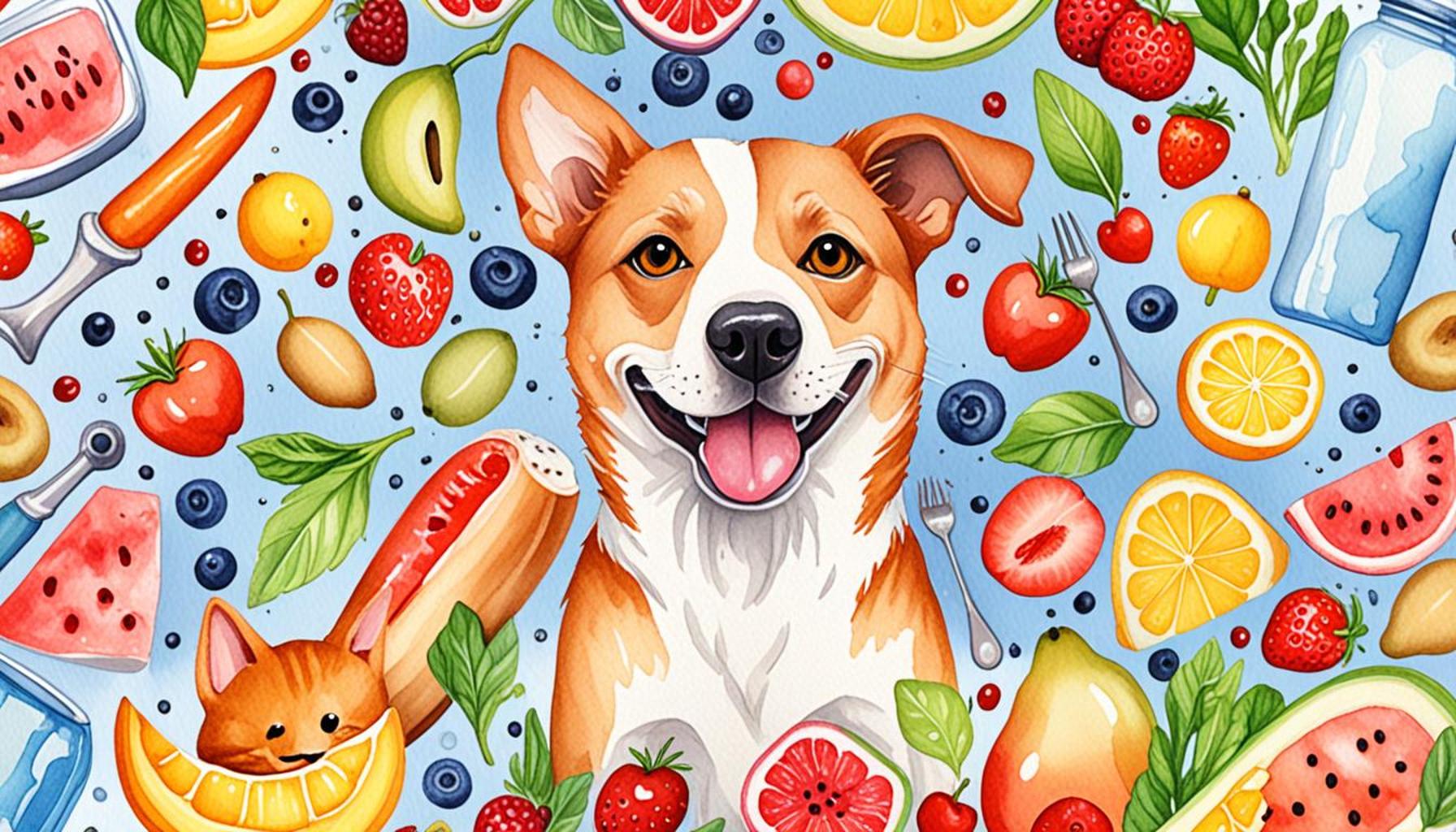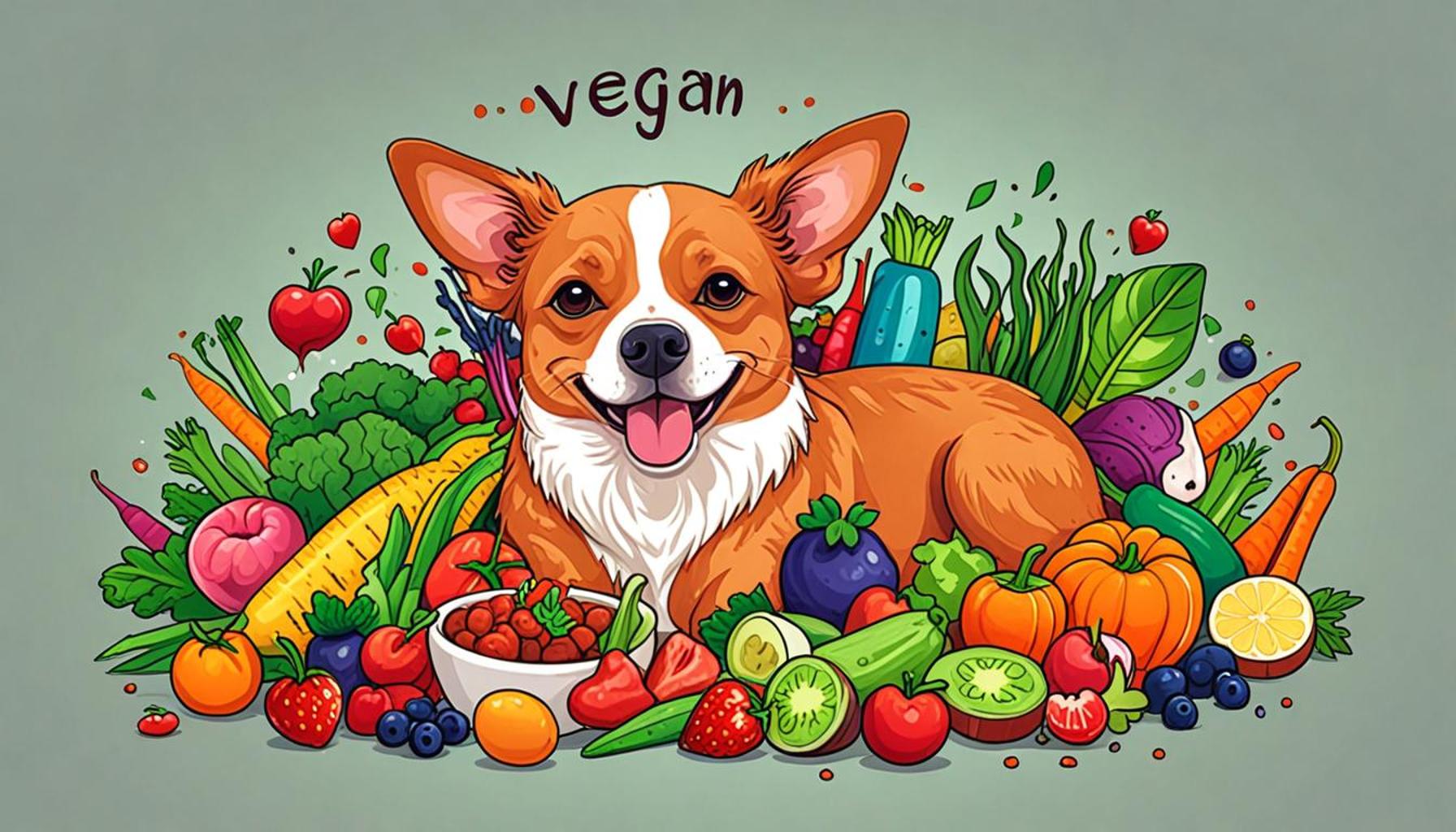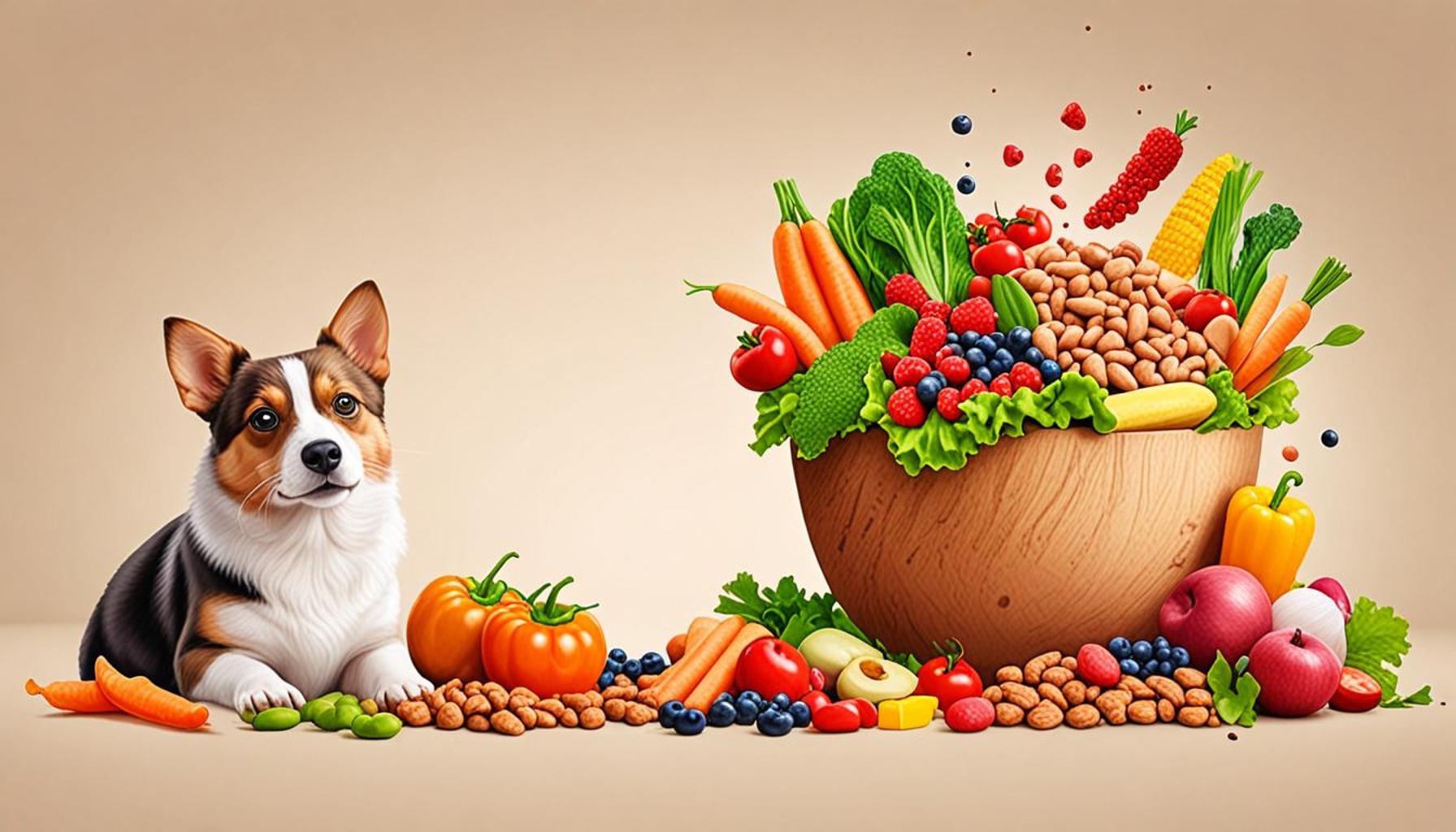The Influence of Nutrition on Oral Health in Dogs and Cats

The Importance of Nutrition in Your Pet’s Oral Health
The well-being of our pets extends beyond just their physical appearance. Nutrition plays a crucial role in maintaining their overall health, particularly when it comes to oral hygiene. Many pet owners may overlook the impact of diet on their furry friends’ teeth and gums, but studies reveal a significant relationship between nutrition and oral health in dogs and cats.
Oral health issues in pets can lead to severe complications if not addressed, including:
- Periodontal disease: This common affliction primarily affects the gums and supporting structures of the teeth, leading to inflammation and infection. This can result in bad breath, irreversible damage, and even tooth loss.
- Tooth decay: Often exacerbated by high-sugar diets, this condition can lead not only to discomfort for the pet but also to expensive veterinary bills and potential extractions.
- Systemic health problems: Poor oral hygiene can have far-reaching effects, contributing to chronic conditions such as heart and kidney disease, which are linked to bacteria that enter the bloodstream from the mouth.
A balanced diet not only nourishes pets but also helps in:
- Strengthening tooth enamel: Essential nutrients like calcium and phosphorus play a key role in enamel health. Foods enriched with these nutrients help maintain strong, healthy teeth.
- Reducing plaque buildup: Certain formulations, such as dental chews or kibble designed with specific textures, can enhance dental health by minimizing plaque and tartar production.
- Maintaining fresh breath: Ingredients such as chlorophyll and specific herbal extracts can combat odors by promoting a clean oral environment.
Just as in human health, the power of prevention cannot be overstated. As pet owners, understanding the intricate connection between nutrition and oral health can lead to better choices. For example, feeding pets high-quality dog or cat food that meets the Association of American Feed Control Officials (AAFCO) standards ensures they receive optimal nutrition. Additionally, incorporating dental treats or specialized dental diets can dramatically impact their oral hygiene.
Investing in a quality diet can foster healthier, happier lives for our dogs and cats. Regular veterinary check-ups, combined with good nutritional practices, can encourage longevity and enhance quality of life. As you consider your pet’s diet, remember that each morsel can be a step towards better oral health. Ultimately, the bond with our pets is strengthened not just through love and care, but also through thoughtful nutritional choices.
LEARN MORE: Click here to discover the benefits of balanced nutrition for your dog
Nutritional Elements That Support Oral Health
A crucial aspect often overlooked by pet owners is the specific nutritional elements that contribute to supporting oral health in dogs and cats. Ingredients found in pet food can have a significant impact on the well-being of their teeth and gums. By understanding these vital components, pet owners can make informed dietary choices that promote optimal dental hygiene.
One of the most important minerals for maintaining dental health is calcium. This mineral not only plays a key role in forming and maintaining strong bones but is also essential for healthy teeth. Foods enriched with calcium can help ensure that your pet’s enamel remains intact and resilient against decay. Similarly, phosphorus, often found alongside calcium, is crucial for the development and maintenance of healthy teeth as it helps in energy production and metabolism.
Besides minerals, fiber also plays a significant role in oral hygiene. Many high-quality pet foods incorporate fibrous ingredients, such as beet pulp or brown rice, which can aid in mechanically cleaning the teeth as your pet chews. This natural scrubbing action helps to reduce plaque buildup and contributes to fresher breath.
In the quest for better oral health, it is integral to consider the texture and form of your pet’s food. For instance, dry kibble generally offers greater dental benefits compared to wet food due to its abrasive texture, which can help to remove food particles and plaque as the pet chews. Additionally, certain dental treats are specifically designed with shapes and materials that encourage chewing, which further assists in maintaining oral health.
When choosing a diet for your pet, it’s also vital to watch out for harmful ingredients. In particular, high-sugar diets can lead to tooth decay and other oral health issues. Ingredients such as corn syrup or excessive carbohydrate fillers can contribute to unhealthy plaque formation and exacerbate existing dental problems. Thus, reading labels and understanding the ingredients becoming increasingly crucial.
Beyond standard nutrition, there are also functional ingredients that can greatly enhance oral health. Regular inclusion of products containing oral health additives, such as chlorophyll, can promote fresh breath and reduce dental bacteria. Moreover, some veterinarians recommend specific probiotic supplements that can help balance oral microbiota, supporting both dental health and the immune system.
In summary, the relationship between nutrition and oral health is both complex and critical. By paying attention to the quality and types of food offered, pet owners have a significant opportunity to foster better dental hygiene in their furry companions. Ultimately, a proactive approach to nutrition can be the keystone in achieving lasting oral health for dogs and cats alike.
The Influence of Nutrition on Oral Health in Dogs and Cats
The dietary choices we make for our pets play a crucial role in their overall health, especially when it comes to oral health. For instance, the inclusion of specific nutrients can significantly impact dental well-being. Essential fatty acids, such as Omega-3, help reduce inflammation in the gums, potentially thwarting periodontal disease. Simultaneously, antioxidants found in fruits and vegetables may aid in combating bacterial growth in the mouth, leading to healthier gums.
Moreover, the texture of the food can also make a difference. Dental diets are specifically designed with larger kibble sizes that promote chewing, which can act as an abrasive scrub for teeth, reducing plaque accumulation. Pet owners should consider integrating these dental-specific products into their pet’s meals to enhance their cleaning regimen while satisfying their nutritional needs.
Furthermore, the availability of fresh water is paramount. Proper hydration assists in maintaining saliva production, which is a natural defense against oral bacteria. A pet’s diet should be complemented by a consistent supply of clean water to help wash away food particles and minimize tartar buildup.
Lastly, regular dental check-ups are vital. While nutrition plays a significant role, professional cleaning and veterinary assessments are necessary to address any buildup of tartar and to detect early signs of dental diseases. Educating pet owners about the influence of nutrition on both their dogs’ and cats’ oral health empowers them to make informed decisions, ultimately contributing to a higher quality of life for their furry companions.
| Category 1 | Category 2 |
|---|---|
| Essential Nutrients | Omega-3 fatty acids and antioxidants to promote gum health |
| Dental-Specific Diets | Larger kibble that helps reduce plaque through chewing |
| Importance of Hydration | Fresh water aids in saliva production and oral bacteria control |
| Regular Vet Check-Ups | Necessary for preventing and detecting dental diseases |
LEARN MORE: Click here for essential tips on socialization in dog training
The Role of Feeding Practices in Maintaining Oral Health
While the nutritional content of pet food is essential in supporting oral health, the feeding practices pet owners employ can significantly influence their dogs’ and cats’ dental hygiene. Adopting the right feeding methods can amplify the benefits of a nutritious diet and mitigate potential oral health issues.
One of the first considerations is the frequency of feeding. Establishing a structured feeding schedule can aid in managing not only a pet’s weight but also their oral health. Dogs and cats accustomed to free feeding, where food is available at all times, may graze throughout the day, leading to more opportunities for plaque and tartar buildup. Conversely, feeding pets two to three measured meals each day can create healthy chewing habits, allowing for increased saliva production that naturally helps to wash away food particles and bacteria.
Another vital aspect to consider is the timing of dental care routines. For many pet owners, brushing a pet’s teeth may seem like a daunting task. However, establishing a routine that includes regular dental care after meals can be beneficial. The simple act of brushing after meals, ideally using a pet-safe toothpaste, serves not only to remove food debris but also introduces a positive association with dental hygiene. Pets can even be gradually trained to accept this practice, turning it into a bonding experience.
The Importance of Chewing
Engagement in activities that promote chewing can also play a role in enhancing oral health. Whether through specific dental chew toys or safe, raw bone treats, these options can help mechanically reduce plaque. The act of chewing itself stimulates the gums and can prevent periodontal disease, a common affliction in both dogs and cats. According to the American Veterinary Dental College, up to 80% of dogs and 70% of cats show signs of dental disease by three years of age, reinforcing the necessity for effective dental care strategies that incorporate chewing.
It is essential for pet owners to ensure that any chew products are appropriate for their pet’s size and chewing habits to minimize the risk of choking or intestinal blockages. Professional recommendations often highlight the use of products with the Veterinary Oral Health Council (VOHC) seal, as these have been tested for their efficacy in reducing plaque and tartar.
Hydration and Its Impact
In addition to what dogs and cats eat, how much they drink can further influence their oral health. Hydration plays a pivotal role in maintaining healthy saliva production, which serves to rinse away food particles and balance oral pH levels. Pets often consume insufficient water when relying solely on dry kibble, so providing a combination of wet food or a water fountain that encourages drinking can significantly enhance hydration and, by extension, their oral health.
Moreover, incorporating dental-specific water additives can also support oral hygiene efforts. These products work through mechanical or chemical means to reduce plaque and calculus formation. However, care should always be taken to choose veterinary-approved additives to ensure the safety of your pets.
Understanding the holistic approach to your pet’s feeding practices and the connection to oral health opens avenues for enhancing their overall well-being. As pet owners become more aware of these interconnections, they can really promote a healthy mouth and consequently, a healthier lifespan for their beloved companions.
LEARN MORE: Click here to discover the benefits of balanced nutrition for your dog
Conclusion
In conclusion, the influence of nutrition on oral health in dogs and cats is a multifaceted issue that extends beyond simply choosing high-quality pet food. Both the contents of a pet’s diet and the surrounding feeding practices play vital roles in maintaining optimal dental hygiene. From establishing structured meal schedules and integrating regular dental care into daily routines to promoting healthy chewing habits, pet owners have the power to enhance their furry companions’ oral health significantly.
Furthermore, the importance of hydration cannot be overlooked; adequate water intake is crucial for maintaining healthy saliva production, which in turn helps prevent dental diseases. By choosing wet food options or using dental-specific water additives, pet owners can bolster their pets’ overall oral health.
As awareness around the connection between nutrition and oral health continues to grow, it is essential for pet owners to adopt a holistic approach. This means not only investing in appropriate diets but also implementing effective feeding routines and dental care practices. By doing so, pet owners can make informed choices that contribute to a healthier mouth and a longer, happier life for their beloved dogs and cats.
Ultimately, understanding these concepts can foster a deeper bond between pets and their owners, while ensuring that our four-legged friends receive the care they deserve. Taking proactive steps in veterinary dental health is not just a matter of aesthetics; it is an investment in the overall well-being of our pets. So, let’s prioritize their dental health as an integral facet of their overall nutritional care.


